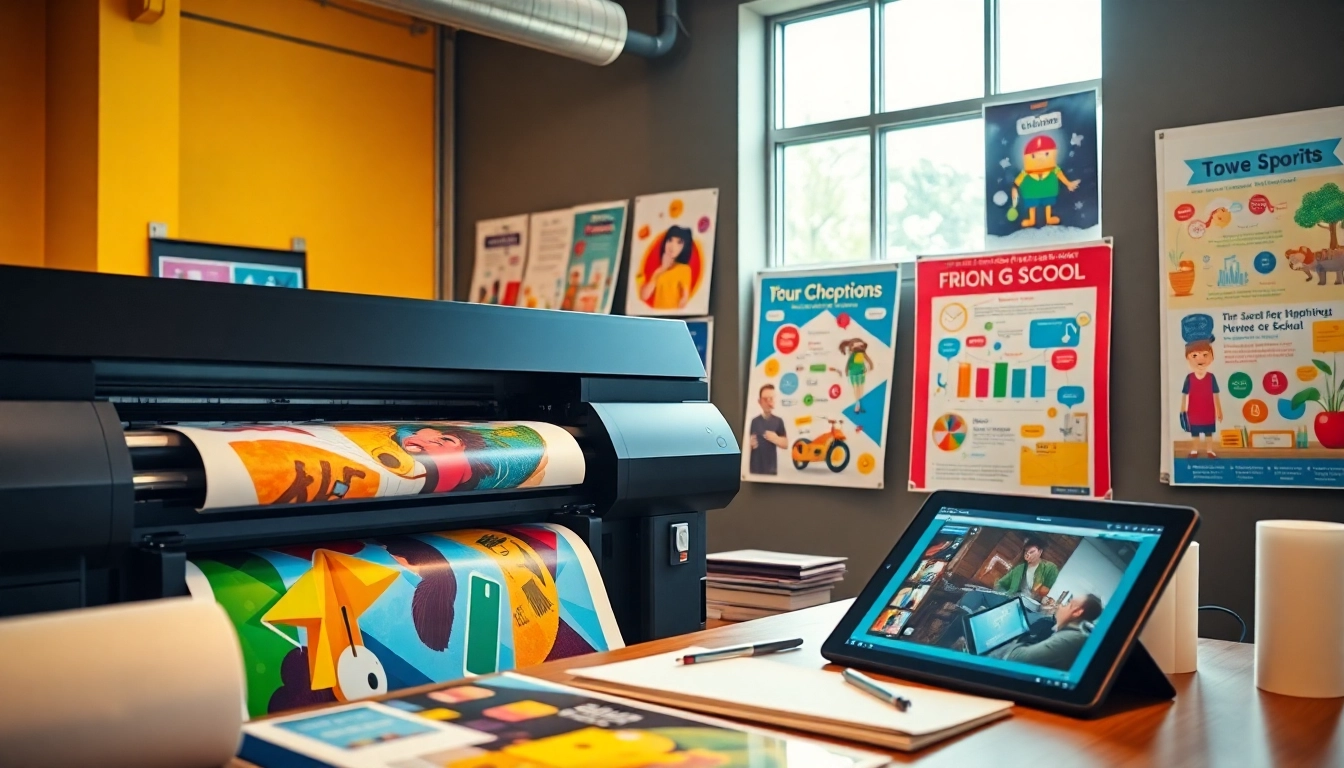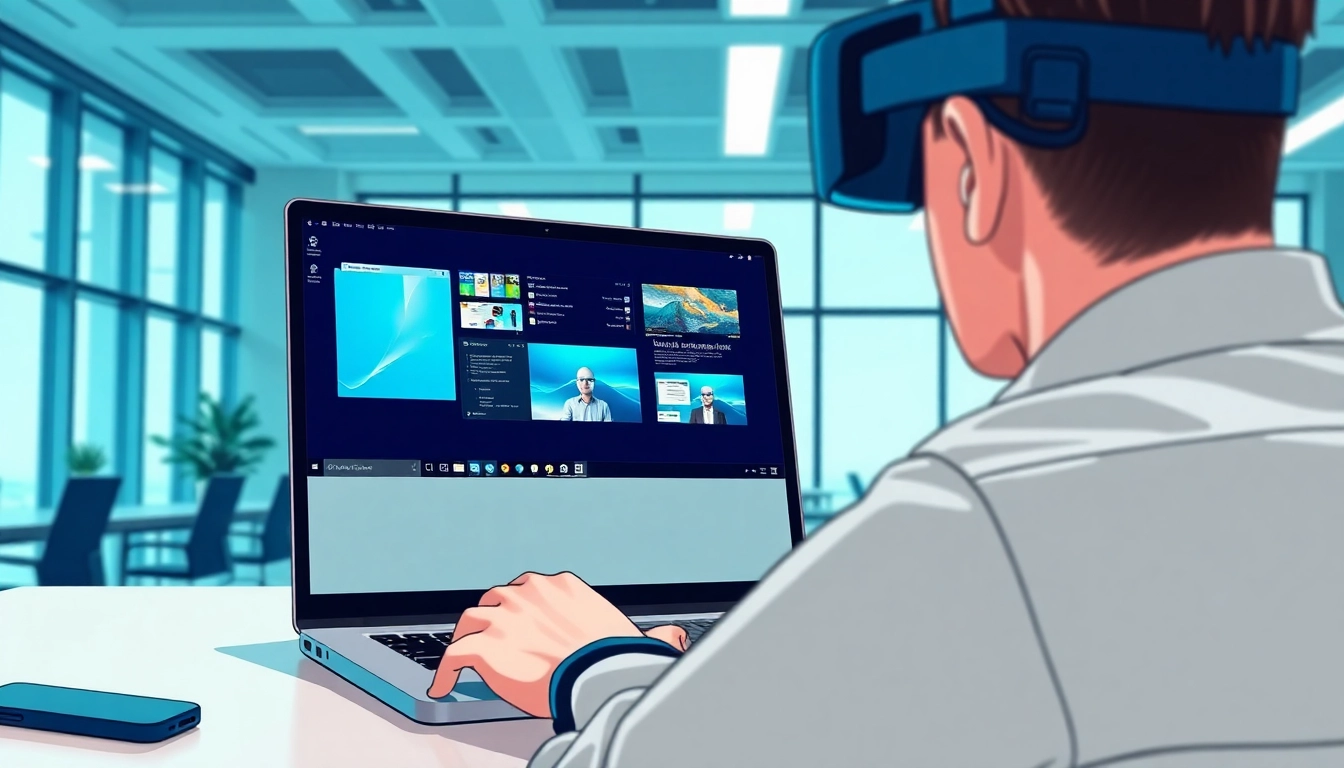Understanding School Poster Printers
What Are School Poster Printers?
School poster printers are specialized printing machines designed to produce high-quality visual materials, typically used in educational settings. These printers cater to the diverse needs of schools, from creating educational posters that reinforce classroom lessons to promotional materials for events and activities. Unlike standard office printers that can struggle with large formats and color accuracy, school poster printers offer capabilities tailored to meet these demands. They employ advanced printing technologies to deliver vibrant colors, sharp text, and durable outputs suitable for display in various environments.
Benefits of Using Professional Printing Services
Opting for professional printing services for school posters can provide a range of benefits, including:
- Quality Assurance: Professional printers utilize state-of-the-art technology, ensuring that posters are printed with precision and high fidelity.
- Customization Options: These services often allow for extensive customization, enabling schools to create unique designs that align with their branding and messaging.
- Time Efficiency: Outsourcing printing allows educators to focus on teaching, while professionals handle the logistics of production.
- Cost-Effectiveness: Purchasing high-volume printing supplies can be expensive; professional services often yield better prices for bulk orders.
For educators looking to enhance their visual communication, partnering with school poster printers can be a game-changer.
Key Features to Look for in Poster Printers
When evaluating poster printers for educational use, several key features should be considered:
- Print Quality: Look for printers that offer high resolution (at least 1200 dpi) for sharp visuals.
- Media Handling: Ensure the printer can accommodate various paper sizes and types, including gloss, matte, and specialty papers.
- Ink Technology: Evaluate the ink systems, such as pigment-based inks for better durability and vibrant colors.
- Speed and Volume: Consider the printer’s speed and its ability to handle large volumes of print jobs, especially during busy periods like school events.
Choosing the Right Printer for Your Needs
Factors to Consider When Selecting a School Poster Printer
Choosing the right school poster printer involves several critical factors:
- Budget: Identify your budget for both the printer itself and ongoing supply costs.
- Space Availability: Ensure you have sufficient space for the printer’s size and any necessary additional equipment.
- User-Friendliness: Opt for printers with intuitive interfaces, especially if multiple staff members will use them.
- Manufacturer Support: Check for warranties, technical support, and availability of replacement parts.
Comparing Different Types of Printer Technologies
There are several printing technologies available for school poster printers:
- Inkjet Printers: These are popular for their ability to produce vivid colors and can print on various media sizes. They are suitable for high-quality poster printing and are often more affordable upfront.
- Laser Printers: Ideal for producing sharp text and images quickly, laser printers can handle high-volume printing but may not match the color accuracy of inkjet printers.
- Wide Format Printers: These printers are specifically designed for large-scale prints, making them perfect for posters and banners, especially in educational environments where visibility is critical.
User Reviews and Recommendations for School Poster Printers
Before making a final decision, it’s beneficial to read user reviews and recommendations. Look for testimonials from other educational institutions that provide insights into their experiences regarding:
- Print quality and color accuracy
- Ease of use and setup
- Customer service experiences
- Longevity and durability of prints
Websites like consumer review platforms can provide valuable data-driven insights regarding specific printer models.
Designing Your School Posters Effectively
Principles of Effective Poster Design
Creating an effective school poster requires an understanding of design principles, including:
- Hierarchy: Establish a clear hierarchy to guide viewers’ attention through the information presented. Use larger text for headings and bold colors to denote important points.
- Contrast: Employ contrasting colors and spacing to make the text and images stand out. This enhances readability, especially from a distance.
- Alignment: Ensure elements are well-aligned; this provides a clean and organized look that is easier to digest.
Incorporating Text and Images for Maximum Impact
Combining text and images effectively can significantly enhance a poster’s impact. Here are some tips:
- Limit Text: Use concise, engaging text that conveys your message without overwhelming the viewer. Aim for clarity and brevity.
- Strong Imagery: Use high-resolution images that relate directly to the poster’s topic. Images should complement the text rather than distract from it.
- Call to Action: Include a clear call to action when necessary, prompting viewers to engage with the content or take specific steps.
Best Graphic Design Tools for Creating Posters
Several graphic design tools can assist in creating eye-catching posters:
- Canva: This user-friendly online tool offers templates specifically for educational posters, ideal for those with limited design experience.
- Adobe Spark: A versatile design platform that allows users to create professional-looking posters while providing templates and design guidance.
- Microsoft Publisher: Ideal for users familiar with Microsoft Office, this software provides ample tools for formatting and layout.
Choosing the right tool depends on your specific needs, level of expertise, and design goals.
Tips for Printing Quality Posters
Preparing Files for Optimal Printing Results
Before sending your design to print, ensure your files are prepared correctly:
- Correct Resolution: The file should be at least 300 DPI (dots per inch) to ensure a high-quality print.
- File Format: Use formats such as PDF or TIFF for best results, as they maintain quality across different devices and printers.
- Color Mode: Use CMYK color mode for printing, as this format is specifically designed for print materials, ensuring colors appear accurately.
Understanding Paper Types and Finishes
Choosing the right paper type and finish can enhance the visual appeal of your posters:
- Paper Weight: Heavier paper lends a more professional feel and durability to posters, especially for displays.
- Finish Options: Matte finishes reduce glare but may not pop as much as glossy finishes, which enhance colors and vibrancy.
- Specialty Papers: Consider options like textured or recycled papers for unique presentations that catch the eye.
Common Printing Mistakes to Avoid
To ensure a smooth printing process, be aware of common pitfalls:
- Ignoring Bleed Requirements: Design graphics to extend beyond the edge of the intended print area to prevent white borders.
- Using Low-Quality Images: Ensure all images are high resolution; otherwise, they may appear pixelated once printed.
- Neglecting Proofing: Always proof your designs before printing large quantities to catch any errors or design issues.
Measuring Success with School Poster Campaigns
Assessing the Impact of Your Posters in Educational Settings
Once your posters are printed, measuring their effectiveness is key to understanding their impact:
- Observation: Monitor student engagement and interest in the posters to gauge their effectiveness in communication.
- Direct Feedback: Gather opinions from students and staff to gain insights into the clarity and appeal of the posters.
- Analytics: If posters promote events or digital content, track attendance or engagement metrics to assess success.
Gathering Feedback and Improving Future Designs
Continuous improvement is essential for maximizing poster effectiveness:
- Surveys: Distribute surveys to collect structured feedback on what works and what doesn’t in your poster designs.
- Focus Groups: Conduct focus groups with students to discuss their preferences and suggestions for future designs.
- Performance Metrics: Analyze attendance at events promoted by posters, linking design elements back to successful outcomes.
Effective Promotion Strategies Utilizing Posters
To further enhance the reach and impact of your school posters, consider these promotional strategies:
- Place Strategically: Position posters in high-traffic areas like hallways, the cafeteria, and entrances where they will be frequently seen.
- Integrate with Digital Campaigns: Use QR codes or links that lead to online content, encouraging engagement beyond the physical poster.
- Networking: Collaborate with teachers and clubs to promote the designs, ensuring that the posters align with school events and activities.













Leave a Reply